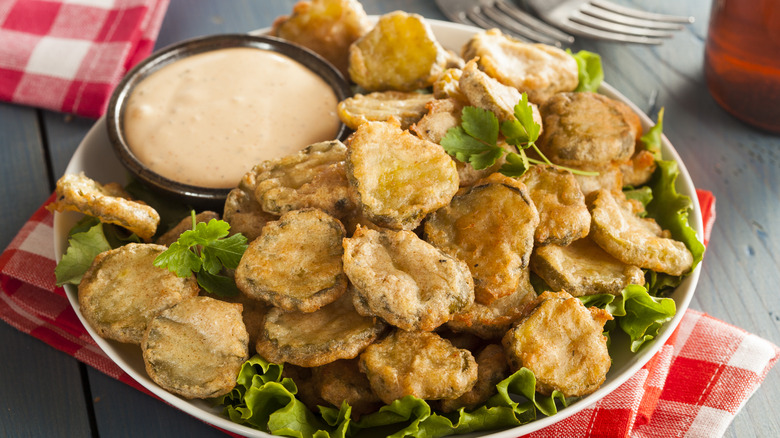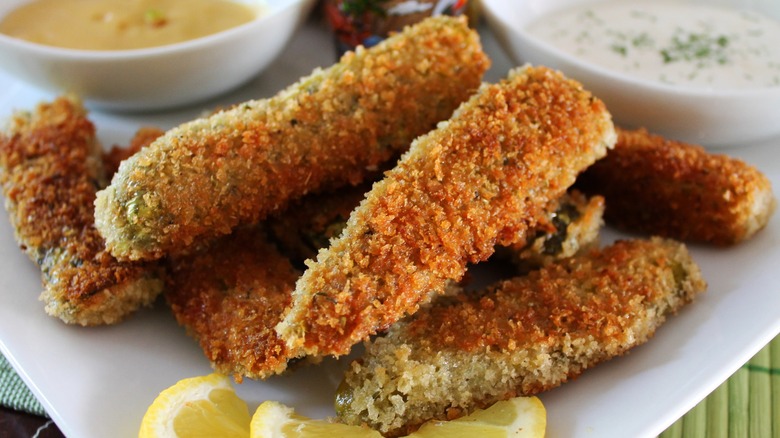Adding Cornstarch Will Prevent Soggy Fried Pickles
Who doesn't love a plate of oh-so-crispy fried food? One of the quintessential deep-fried snacks, fried pickles are tangy and tasty with a signature crunch. From fried pickle spears with spicy mayo to the lighter fare of baked pickle chips with cheese, balancing moisture and achieving the right crispness is key for pickle perfection. Naturally juicy, pickles have a lot of moisture that can alter the dry ingredients in breading mixes and make the frying process result in a soggy mess.
The extra juicy goodness of a pickle is part of what makes it a popular snack and sandwich companion and the contrast of a crunchy coating and the pop of juice you get when biting into a fried pickle gives major mouthfeel appeal. But, despite all the benefits of juicy pickles, the abundance of moisture presents an age-old problem and the cardinal sin when it comes to frying: the risk of sogginess. Luckily, cornstarch can provide the absorption power that saves the day, or at least the dish.
There are lots of techniques to help avoid deep frying mistakes that could result in soggy food, but, for fried pickles, the best secret lies in the breading — and the pantry staple ingredient that takes it to the next level. For the crispiest fried pickles, add cornstarch to the breading batter recipe. More absorbent than flour or breadcrumbs alone, cornstarch helps remove excess moisture from the pickles, and also reacts with hot frying oil to thicken the coat of breading for a super crispy crunch.
How to get out of a sogginess pickle
If you've ever had the misfortune of getting fried pickles with soggy breading bathed in grease, you know that making the dish can be a real pickle. Cornstarch can help you avoid a fried pickle faux pas by drawing some of the excess water content from your pickle spears or chips. Along with using a paper towel to soak up some of the pickles' juices before frying, incorporating cornstarch into the breading mix helps reduce wetness and ensures a crisp fry. It's important to dry food before applying the breading because a high moisture content prevents dry ingredients from correctly reacting with hot oil. If improperly prepared, the batter on your pickles will soak up all that grease instead of frying to perfection.
So, how does cornstarch counter moisture? Well, it contains amylose, a polysaccharide that makes up the crystallizable form of starch. Cornstarch has a higher amylose percentage than both flour and potato starch, meaning that it works best for creating maximum crunch. Oil and water don't mix, so after immersing cornstarch-coated pickles, the hot oil forces moisture away. Then, the starch molecules in cornstarch create a barrier that results in the crunchy texture of fried food. If you're short on cornstarch, but still want fantastic fried pickles, try substituting it for a bit of baking powder in the batter recipe. While baking powder doesn't have the exact same absorption effect as cornstarch, it's a quick fix in a pickle pinch.

